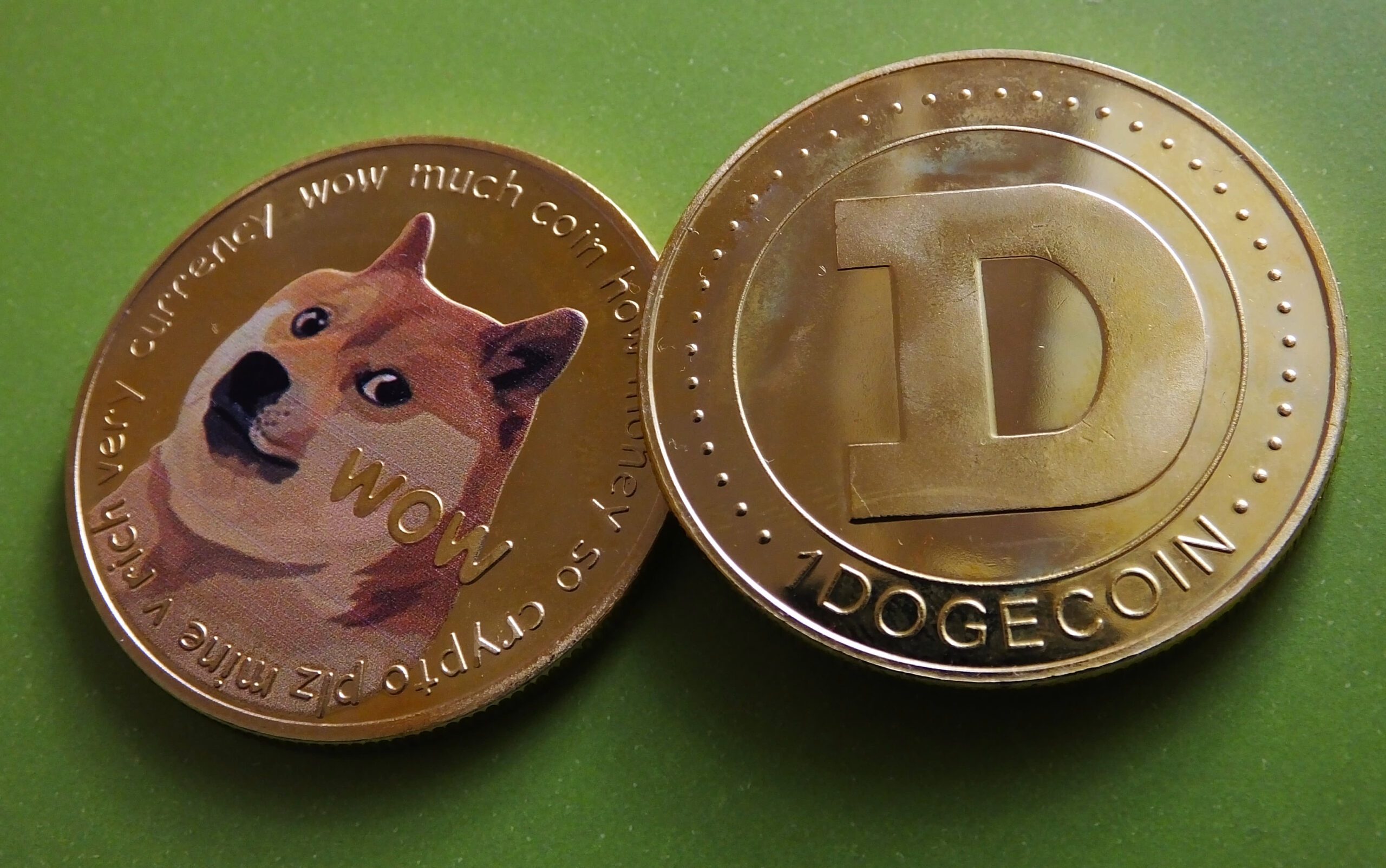Sezzle Inc. (NASDAQ:SEZL) Q2 2024 Earnings Conference Call August 7, 2024 5:00 PM ET
Company Participants
Charles Youakim – CEO and Executive Chairman
Karen Hartje – CFO and Head of Corp
Conference Call Participants
Mike Grondahl – FNBO Northland
Operator
Good day, and welcome to the Sezzle, Inc. Second Quarter Financial Results Conference Call. [Operator Instructions] Please note this event is being recorded.
I would now like to turn the conference over to Charlie Youakim. Please go ahead.
Charles Youakim
Thank you. Good afternoon, everyone, and welcome to Sezzle’s 2024 second quarter earnings call. My name is Charlie Youakim. I’m the CEO and Executive Chairman of Sezzle. I’m joined today by our Chief Financial Officer, Karen Hartje; and our Head of Corp.
Devon IR, Lee Brading. In conjunction with this conference call, we filed our earnings announcement with the SEC and have posted it along with our earnings presentation on our investor website on sezzle.com. If you have not already done so, please go to the Investor Relations section of our website. There, you will find the press release and our earnings presentation under quarterly earnings within the financial section. Now that we have all the administrative duties out of the way, let’s get started. We’re extremely excited to share our Q2 results and our updated guidance with you.
Please flip ahead to Slide 3. Slide 3 provides an overview of how our actions are translating into positive results. As you can see, Q2 revenue rose 6.2% year-on-year, driven by strong growth in consumer purchase frequency and subscriber growth. Our growth is outpacing the buy now, pay later industry as reported by third-party research companies such as Adobe Analytics.
Net income for the quarter came in at $29.7 million. Yes, $29.7 million for the quarter. But before anyone gets too excited, it includes a onetime discrete income tax benefit of $16.8 million for the release of the valuation allowance previously recorded against our deferred tax assets. This is effectively recognizing a deferred tax asset and pulling its impact forward. What that means for next year is that we’ll be recognizing taxes at their full effect.
So, adjusted net income for the quarter of $13.1 million, which is a number that we are still very proud of. As a result, we are raising our fiscal 2024 guidance across the board. And because of the onetime items, we are now providing adjusted net income and adjusted net income per diluted share guidance of $40 million and $6.75 respectively.
But don’t worry about the term adjusted, we aren’t adjusting out real costs like stock-based comp and interest. We’re just removing a few onetime items that can make it more difficult for investors to understand our performance.
We will walk through all the guidance and a more detailed explanation of the onetime items at the end of the presentation. Our total subscriber count increased by 91,000 during the quarter to 462,000 and our consumer engagement continues to grow as evidenced by the top 10% of consumers transacting an average of 70 times per year. This number stood at 53x at the end of Q1. We continue to strongly exceed the rule of 40, no matter how one slices the equation. Last quarter, we also discussed another measuring stick of 20, 60 to 20, which equates to 20-plus percent revenue growth, 60-plus percent gross margin and 20-plus percent net income margin.
We came very close to achieving each of these metrics in Q2, but fell just short of the gross margin line. Nonetheless, great results for the quarter. I guess one could say that we created our own rule of 100.
As a company, we continue to push forward with a focus on our guiding principles as shown on Slide 4. It’s obvious from the outside that we are positively affecting profitability as we continue to report higher net income each quarter and increase forward guidance.
However, I don’t think people outside of Sezzle will truly appreciate the laser focus on improving bottom line results. It is woven into every decision that we make from revenue-generating activities to cost-saving initiatives.
A key part of the formula for increasing profitability is increasing the lifetime value of our consumers. The launch of our premium and anywhere subscription product is a great example of us finding a way to increase the lifetime value of our consumers with products they truly love. We continue to have an eye on new product offerings our consumers need and want and enhancing those that we already provide them, all with the goal of improving retention, frequency and satisfaction.
We believe we have numerous opportunities to continue to enhance the consumer experience with Sezzle and thus continue to drive top and bottom-line results. A key part of enhancing lifetime value is providing products that consumers need, which we believe will lead us to acquiring more new users. I’m happy to say that we are seeing green shoots in this area.
You will see later in the presentation that we are experiencing sequential quarterly growth in active users and that starting in Q3, we should report year-over-year growth in active users. From a stakeholder perspective, driving profit and bottom-line results are important, but we also recognize that we must be good stewards.
We are a public benefit corporation and are proud to be the only buy now, pay later company that has a certified B Corp, which is Sezzle being good stewards for the next generation that comes after us.
As shown on Slide 5, we have 462,000 subscribers. The growth of 91,000 subscribers this quarter outpaced the last quarter’s growth of $64,000. The increase was driven by a few different initiatives that are paying off. First, our efforts in attracting first-time users to Sezzle are starting to pay off, meaning more consumers are coming into the top of the funnel.
Second, we have expanded the pool of current users that are available to join. And third, driven by our strong LTVs, we have increased ad spending for consumer sign-ups. We are monitoring these efforts closely for the trade-off between profitability and credit losses.
We expect and to date have seen that the path we have chosen is the right one. While we expect to see an increase in our provision for credit losses, potentially to mid-2% in the second half of the year, we believe it will be more than offset by enhanced margins, growth and ultimately higher profitability through more lifetime value creation.
The year-on-year increase in our second quarter provision is an active example of that. We know that we have higher-margin products now, which allows us to open up our products to more and more consumers. The trade-off is paying off. The amount of engagement and positive feedback from consumers has been overwhelming. Our incredible NPS scores rose once again and consumers are using our payment method in new locations where only debit or credit cards dominated in the past.
Once Toto is an apparel-only product, Sezzle’s pay-in-4 payment method is moving into the mainstream and becoming top of wallet for more and more users. In the ever-evolving landscape of consumer finance more and more, the data is suggesting that buy now, pay later is simply a modern adaptation of credit and a popular one at that.
On Slide 6, we wanted to update you all on what we’re seeing from payment streaks as we’re very happy with the results. Not only are we seeing enhanced engagement through this gamification, but we are seeing rank order repayment results, which allows us to use the information gleaned through streaks as another layer of user segmentation. And the plus in all of this is that it aligns with rewarding good behavior and educating newer credit users on the importance of proper repayment.
We think all of this aligns with our mission of financially empowering the next generation. And I’m sure you figured it all out by now that a good deal of our efforts is focused on profitability and increasing consumer lifetime values.
From a high level, Slide 7 shows how we have done that over time. We continue to evolve and adapt and add value for our stakeholders. From our original merchant direct integration product in 2017 to credit reporting in 2021 to subscriptions in 2022 and 2023.
At each stage, we enhanced the consumers’ experience and have increased consumer lifetime values in the process. More recently, we launched other initiatives such as our product marketplace and payment streets, which we expect to add to the consumer experience and thus increase consumer lifetime values.
As we look forward, the bank partnership is the next significant leg in our journey to expand our relationship with the consumer. We are excited about the progress we have made with our future bank partner and expect to complete the process and go live with them in the fourth quarter. We have not yet shared the monetary future benefits of the banking relationship or included anything related to it as part of our forward guidance as forces outside of our control can impact the timing.
We prefer to have the bird in hand before we include it in our guidance. I won’t go through a lot of details as we have discussed the benefits of the partnership on past calls, but let me remind you of a couple of points. Initially, the bank partnership will allow us to unify our product construct across the United States versus the state-by-state approach we have today.
As you might imagine, state laws are not consistent from state to state with restrictions on fees such as late fees, varying widely. Our current state-by-state setup makes running our business a bit more complicated and also limits our profitability.
Once we’re live with the bank partnership, we unified the product construct on a national level. The partnership will also allow us to launch products that we believe will be a key to future user acquisition and consumer lifetime value expansion.
Out of the gate, we expect to launch on demand, which will allow consumers to use this everywhere, even if they don’t have a subscription with us. We believe this product can help us in a couple of ways. First, not everyone wants to be a subscriber.
And with on demand, the consumer can pay a onetime transaction fee at the point of sale to use us with merchants we are integrated with. Second, we believe it will help us become more competitive in winning enterprise merchants. Just to reiterate, we are very excited to be adding more eras to the quiver.
In addition to closely tracking financial metrics, we are equally rapid about nonfinancial metrics with a small sample shown on Slide 8. There is nothing but green on the screen except for active consumers, which we expect to be green next quarter.
The improvements in frequency, unique merchants and number of transactions are all tied to the growth in subscriptions as shoppers want to use Sezzle everywhere and in the regular part of their daily lives. It’s both exciting and rewarding to see.
We have also added Slide 9 to show the quarter-over-quarter momentum. We believe the quarter-over-quarter results reflect the strong momentum that we are seeing in the business and why we are confident that we will continue to grow our active consumer accounts.
And with that, I’m happy to turn the call over to our CFO, Karen Hartje, who will go over our quarterly financial results in greater detail. Karen?
Karen Hartje
Thank you, Charlie, and hello to all.
On to Slide 10. I’m excited to dive a little deeper into the results that Charlie provided earlier. Total revenue increased 60.2% year-over-year due to a 39% increase in UMS and 288% increase in subscription revenue as Sezzle Anywhere was launched in June 2023 end of the second quarter of 2023. Net income came in at $29.7 million for the quarter compared to $1.1 million in the previous year.
As noted by Charlie at the start of the call, we recorded a discrete tax benefit of $16.8 million in the quarter related to our deferred tax valuation allowance. In the second quarter, we determined that our deferred tax assets are more likely than not to be realized due to the company’s profitable trajectory and thus putting us in a taxable income position in the current and likely future years. To remove the discrete nature of the adjustment on net income, we have provided adjusted net income as a more reflective run rate of the company’s results.
Adjusted net income was $13.1 million compared to a loss of $0.2 million in the prior year. The improvement was driven by across-the-board performance with unit economics as total revenue less transaction-related costs grew to 57.6% of total revenue compared to 53.7% in the prior year and leveraging our non-transaction-related operating expenses as they declined to 32.9% of total revenue compared to 54.2% in the prior year. Those results are further reflected in our second quarter adjusted EBITDA margin of 32.9% compared to only 18.3% in the prior year.
On Slide 11, you can see the second quarter revenue growth of 60% year-over-year is outpacing our UMS growth of 38.9%. Other than UMS, most of the growth is attributable to subscription, particularly Sezzle Anywhere. At the end of the second quarter of 2024, we had 462,000 subscribers compared to only 168,000 in the previous year. We didn’t launch Anywhere until June of 2023.
Thus, a lot of UMS and subscriber growth occurred subsequently. We are also happy to point out that total revenue as a percentage of UMS reached an all-time quarterly high at 10.5% in the second quarter.
We have bundled all of our transaction-related costs on to Slide 12. First, let’s look at transaction expense, which is primarily payment processing costs. That declined to 2% of UMS. We believe we can maintain this level in the low 2s. Next, we’ve seen a significant improvement in our net interest expense as we entered into a new credit facility in April, which lowered our borrowing costs by 475 bps annually and lowered our required borrowing level by $20 million from $80 million to $60 million.
The last component of transaction-related cost is the provision for credit losses. As anticipated, it has risen as a percentage of UMS as the first quarter is typically the lowest point due to the tax refund season. As the year progresses, it tends to rise especially during the holiday season, quarter 4.
For 2024, we expect a similar trend to occur and wouldn’t be surprised to see it reach the mid-2s. As Charlie discussed earlier, we are seeing an increase in subscribers and more consumers coming into the top of the funnel, and as such, are closely monitoring as we expect an increase in revenue and unit economics to more than offset a higher move in the provision for credit losses. Our second quarter results are a great example of this.
Despite our provision for credit losses rising to 1.9% of UMS from 1.1% in the prior year and 1% in the previous quarter, our total revenue less transaction-related costs as a percentage of revenue, shown on Slide 13, increased 390 basis points year-over-year and 230 basis points quarter-over-quarter. As you will see later in our presentation, our second quarter unit economic results were well above our previous guidance of 50%, and therefore, we are increasing our fiscal 2024 guidance to 55%.
Turning to Slide 14. It quickly becomes evident that the combination of holding down non-transaction-related operating costs, while improving unit profitability is a strong combination for bottom line performance.
For the remainder of 2024, we do expect to see some pickup in non-transaction-related operating costs, but not at the expense of bottom-line profitability. We joke internally but it is amazing what making money will allow one to do, such as investing in more brand awareness and customer acquisition. The good thing is that we are finding ourselves in a position where we can make investments in the business that we might not have made in the past, particularly in marketing.
Speaking at bottom line performance, turn to Slide 15, where we lay out the reconciliation between net income and adjusted net income. In past quarters, we’ve had minor adjustments, but with the size of the release of the valuation allowance, it became necessary. For the first time, our adjusted net income margin exceeded 20%. We realize many investors also like to refer to EBITDA.
So, slide 16 provides the comparison of our net income metrics to adjusted EBITDA, where adjusted EBITDA margin reached 32.9%. As discussed in our last quarterly conference call, we improved our liquidity position and solidified our capacity for further growth with a new $150 million credit facility that was closed in April.
Slide 17 shows some key balance sheet metrics, and you’ll see in the fine print and the footnotes, but as of quarter end, we had $35.3 million of availability on our line of credit. I would also like to note that during the quarter, we repurchased shares in the open market, representing approximately $10.6 million, leaving $7.1 million left in our repurchase plan. The $7.1 million was fully executed as of July 9, 2024.
I’m sure by now, everybody has looked ahead to the outlook, Slide 18. Let me provide a few highlights before turning the call over to Q&A. We are excited to be increasing our guidance for total revenue, margin, net income and net income per share.
As discussed earlier, for the first time, we are providing guidance on adjusted net income, but due to the dynamic of the discrete tax items, we are also providing guidance for a mid-single-digit tax rate for the remainder of fiscal 2024. Without diving into all the details, I think our guidance speaks for itself. We’ve shown a lot of positive momentum in the business, and we expect it to continue, which leads me to the bottom of Slide 18, valuation.
We get it. Right now, we are a small cap, but so is the rest of the Russell 2000. You might sense that we aren’t happy with our valuation, considering our growth and profitability as we continue to trade at less than half the valuation compared with popular market indices.
As of today, since December of 2023, we have completed $20 million in stock repurchases, and we will continue to evaluate capital return options for shareholders, including, but not limited to, special dividends, incremental share repurchases or a combination of both. With that, I would like to turn the call over to the operator as we are happy to take your questions.
Operator, will you please open the line for Q&A.
Question-and-Answer Session
Operator
[Operator Instructions] Our first question comes from Mike Grondahl with FNBO Northland. Please go ahead.
Mike Grondahl
Hi Charlie, and team. Congratulations on a very strong quarter. My first question, subscriptions growing 91,000 sequentially to 462. Charlie, you mentioned, hey, you had some initiatives for first-time users. You’re trying to expand the pool of current users and some ad spending. I don’t know, just a few more details on each one of those might be helpful and kind of your outlook for subscriptions?
Charles Youakim
Yes, we’re not providing any guidance on subscriptions, Mike. And then to the quarter-over-quarter results, we are putting a little bit more emphasis into marketing channels. Our view is, as we get stronger and stronger as a business financially, it just makes sense to keep on pushing the pedal on that side. I wouldn’t say that we’re like overly aggressive or jerky about it. We kind of like to have like a steady push or acceleration as we do that.
So, I think that’s helped a bit. But in terms of quarter-over-quarter and where this goes from here, it’s just hard for us to tell because if you look at our total active users and the ratio between total subscribers to that number, at some point, you think there’s got to be some sort of limiting function, right? We don’t know the answer to where that might be.
So, we keep on trying to grow and keep on accelerating and accelerating both groups, growing the active users, which is like the consists like a mini-TAM or an intermediate TAM for the subscriber count. So, I think that’s where we’re focused on both because we think at some point, there’ll be some sort of limiting function between the two. Does that make sense?
Mike Grondahl
Yes, directionally. And then just premium and anywhere, like the average is like $15 a month per subscriber, correct? That’s the change?
Charles Youakim
Yes, that’s the same.
Mike Grondahl
Got it. And then any new merchants to call out just on your merchant relationships that are now live in the last quarter or two?
Charles Youakim
No, we would have announced something publicly if we had a significant merchant. I will not say that our team is growing the pipeline. That’s one thing we’re watching closely. And, as we mentioned in the call here, some of the launches that we have in the pipeline are actually tied in some ways to the bank partnerships. So, the bank partnership helps us launch more merchants through our on-demand product.
Those are generally some merchants that have lower margins. They’re looking for a product or more of the fees are passed on to the consumer. So, we have some of that kind of tied behind that launch of that product as well.
Mike Grondahl
Got it. Your revenue as a percent of UMS was 10.5%, higher than where we modeled, and it looked like almost a record for you guys. How should we think about that number going forward? Is that sort of a nice tailwind pushing that higher? Or you’re getting more efficient, you also have more subscriptions. How do you feel about that number?
Charles Youakim
Of course, I love it. And I want to keep on moving it north personally. But as a company, I think subscription helps us with that. But then we also have new products launching. And so, again, that’s hard to project going forward where that might go.
But our goal is really to keep on increasing top line, which helps us get higher gross margins. We mentioned we have gold, 60% plus gross margins as a company and getting that top line definitely helps with that. I think somewhere in this range going forward is probably a good place to start. But we do monitor that number. No doubt about it. But as we introduce new products, that’s going to be the big question mark what those new products might do to that.
Mike Grondahl
Got it. And then, last one for me. Adjusted net income, $13.1 million in 2Q. I think per that slide, $9.4 million in 1Q, so $22.5 million. Your $40 million of adjusted net income guidance would kind of imply $18.5 million in the back half of the year, if I’m thinking about it right. Is there something seasonally there we should be cognizant of? Or just kind of the step down there?
Charles Youakim
I think some of that is seasonal because fourth quarter comes along, it’s definitely a higher volume quarter for us, but it’s also a quarter — I mean, this is why the buy now, pay later product, I think, is such a fantastic product for consumers. In that quarter, we try our best to make sure that consumers don’t overspend, which on the flip side, I think credit cards love when consumers overspend because they build up balances and they start to evolve.
We don’t want consumers to overspend in that quarter because if they oversee tend to find is that leads to higher default and then higher default leads to lost consumers because with our product, once they aren’t a default situation, they can’t transact with us again.
So, we play a lot of defenses, tend to have higher loss rates in the fourth quarter. And so, I think that’s probably the biggest variable going forward, and we don’t want to misguide anyone with the variability that can happen in the fourth quarter. I think that’s really more about what we’re guiding for.
Mike Grondahl
Got it. Congratulations again. Thank you.
Charles Youakim
Thanks Mike.
Operator
This concludes our question-and-answer session. I would like to turn the conference back over to Charlie you came for any closing remarks.
Charles Youakim
Thank you. Thank you, operator. In closing, again, I’d like to thank the Sezzle team. I know on the outside, I think we look like a comm duct above water, but I can guarantee that below the services team’s legs are moving extremely fast. And I think the work has been incredible through the past quarter and more than just the past quarter.
And also, for your frequent listeners to the conference call since to those in Sezzle all know that I love Charlie Munger. Here’s another Charlie Munger quote that’s appropriate for the real Sezzle investors, i.e., the long-term holders. The big money is not in the buying and selling, but in the waiting. Thank you all, and have a great rest of your day.
Operator
The conference has now concluded. Thank you for attending today’s presentation. You may now disconnect.














